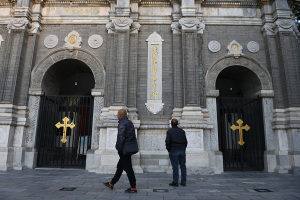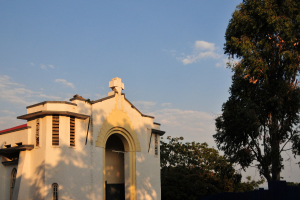Cultural Disconnect
Portraying Christians in Film
Peter Dans is a Johns Hopkins physician who loved going to the movies as a boy. He watched films like Going My Way and Boys' Town, which featured honorable priests. But after the start of his medical practice in 1961, Dans no longer had much time for films.
Fast forward 30 years. Dans was asked to write a column about how Hollywood portrayed doctors for a medical journal. To write it, he had to start going to the movies again. He was struck not only by how badly doctors were portrayed, but also of the contemptuous treatment of Christians and the Church.
In his new book, Christians in the Movies: A Century of Saints and Sinners, Dans writes that when he was young, celluloid clergymen "were tough-yet-good-hearted priests, often played by big stars like Spencer Tracy, Pat O'Brien, and Bing Crosby." But these days, he writes, virtually all priests, preachers, and believers are portrayed as "vicious predators or narrow-minded, mean-spirited Pharisees."
What happened in those three decades? A huge shift in worldview.
In the early days of film, movie-makers understood that religion was a source of comfort and stability for most Americans. But by the late 1940s, Dans writes, social changes were taking place "that would alter Hollywood's reverential approach" to religion.
American-made films were required to follow the Motion Picture Production Code, which demanded that subjects like religion and sexuality be treated with sensitivity. But foreign films were not bound by these strictures, and when they began pouring into the U.S., American filmmakers began to rebel against the Code.
Second, the tumultuous cultural events of the 1960s led to dramatic changes in our society-including, Dans writes, calls for "nonjudmentalism," disagreements over right and wrong, and "the rise in the affirmation of personal autonomy rights." As Americans became more affluent and secure, Dans says, "there seemed to be less of a need...[for] practicing a faith whose God demanded behaviors that restricted lifestyle choices."
And third, polls reflected a huge gulf between the religious practices of the Hollywood crowd and ordinary Americans. This "cultural disconnect" and its reflection in films was accelerated by two important changes. First, after 1965, American Catholics were no longer obligated to avoid films condemned by the Catholic Legion of Decency rating system. Second was the demise of the Motion Picture Production Code in 1968.
Today, with a few exceptions like Amazing Grace and The Blind Side, it's hard to find films that do not depict Christians as charlatans, dupes, and hypocrites.
Many believers respond by simply refusing to see modern films. But we ought to care about how we are depicted on film, because films are immensely influential in shaping public perceptions of us.
We should lobby filmmakers about how we are portrayed-just as other cultural groups do. And when anti-Christian films emerge, we ought to confront them head-on, helping believers, especially our kids, understand the worldview that is driving these films-a worldview that sees Christianity, not as a source of truth and goodness, but of backwardness and evil.




























